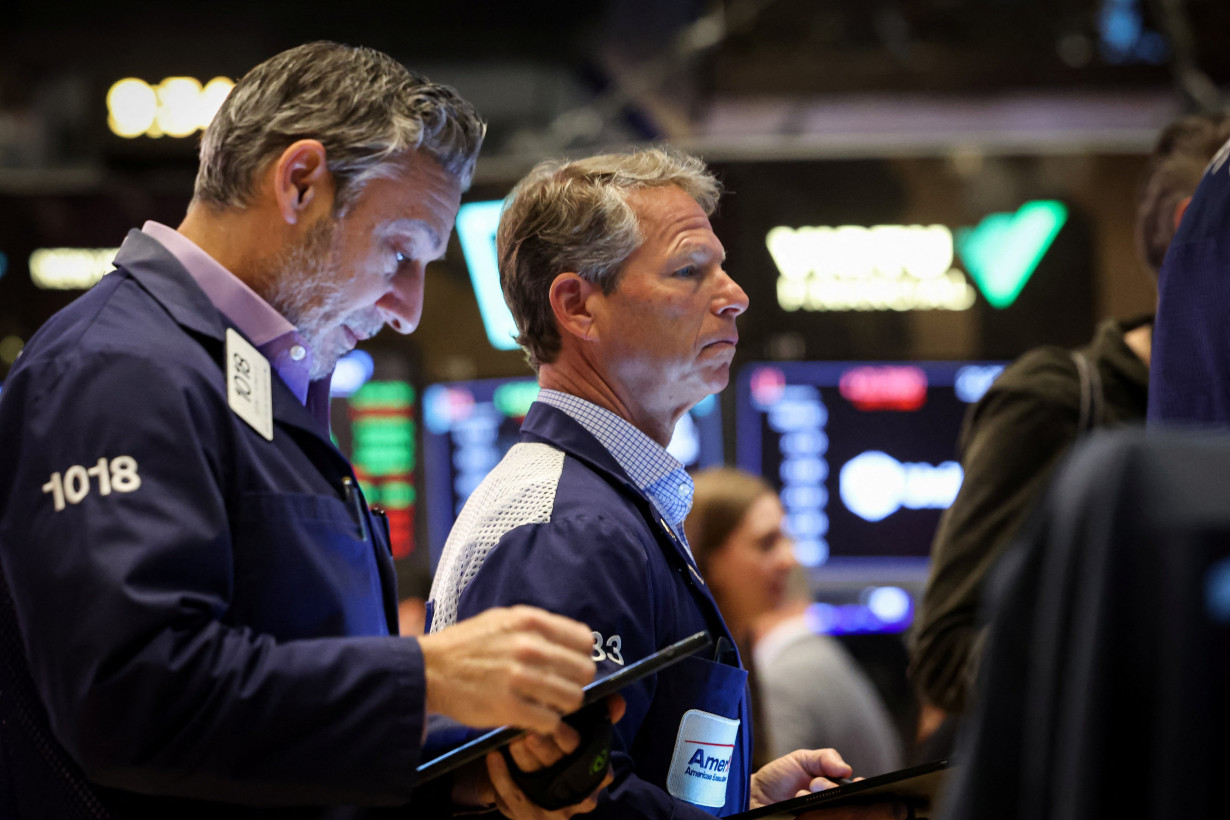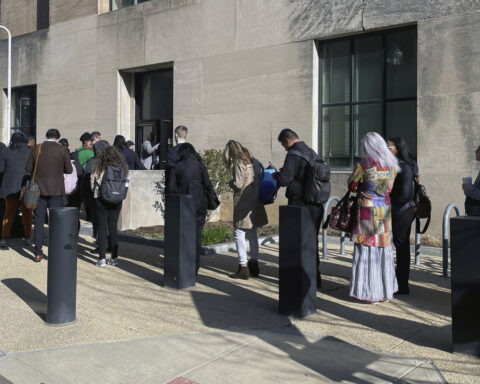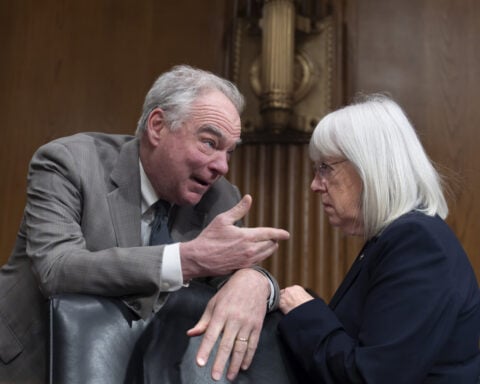What matters in U.S. and global markets today
By Mike Dolan, Editor-At-Large, Financial Industry and Financial Markets
It's Friday, so today I'll provide a quick overview of what's happening in global markets and then offer you some weekend reading suggestions away from the headlines.
I’d love to hear from you, so please reach out to me at mike.dolan@thomsonreuters.com.
Today's Market Minute
* The Trump administration has proposed a new, more expansive minerals deal with Ukraine, according to three people familiar with the ongoing negotiations and a summary of a draft proposal obtained by Reuters.
* CoreWeave reduced the size of its U.S. initial public offering and priced its shares below the indicated range, the company said on Thursday, dampening expectations that the listing would boost investor appetite for IPOs.
* Canadian Prime Minister Mark Carney said on Thursday that he would respond with unspecified trade actions if U.S. President Donald Trump imposes new auto tariffs that have expanded a global trade war and hammered stocks.
* Oil prices retreated on Friday amid tariff-related demand concerns, but headed for a third weekly gain on a tightening global supply outlook after the U.S. placed more pressure on Venezuelan and Iranian oil trade.
* Core consumer inflation in Japan's capital accelerated in March on steady gains in food costs, data showed on Friday, keeping alive market expectations of a near-term interest rate hike.
The market's epic swoon
While the week's trade war fears have cast a pall over world stock markets, bond markets are grappling with a complex mix of subdued inflation, tariff-related future price fears and mounting public debt.
U.S. President Donald Trump's auto tariff announcement this week elicited promises of retaliatory action as well as last minute negotiations to head off further sweeping tariff moves next week.
Most economists' believe a widespread trade war will depress global growth and lift inflation - by how much and for how long remains a matter of debate.
Wall Street clearly isn't happy with what it's seeing. The S&P 500 closed in the red again on Thursday, cowering below its 200-day moving average as the first quarter limps to a close.
With stocks around the world deep in the red again on Friday, U.S. futures are down again ahead of the bell.
Trade war concerns remain the dominant issue rattling markets, but rancorous geopolitics - over messy Ukraine ceasefire talks and also Trump's apparent desire to annex Greenland - aren't helping.
Perhaps unsurprisingly, gold prices hit a new record on Friday, clocking a 17% gain for 2025 so far.
The whole picture is even more complicated for bond markets, with 10-year and 30-year Treasury yields hitting their highest in over a month on Thursday, even as shorter-dated yields remained subdued. That expanded the 2-year and 30-year yield spread to its widest in three years.
The growth and inflation calculus from the brewing trade war may explain some of this move.
But in the meantime, U.S. inflation numbers remain subdued, and the high-frequency hard data show that the growth picture is holding up. Though, of course, the new trade barriers have yet to be imposed.
The Federal Reserve's favoured inflation gauge from the personal consumption expenditures series is due for release on Friday and expected to show that headline inflation remained steady at 2.5% last month.
That combination, along with the continued retreat of stock prices, helped push 10-year Treasury yields lower on Friday, though longer term concerns continue to rankle.
With this year's budget impasse in Washington still unresolved and debt ceiling pressures due to build, U.S. debt metrics continue to ring alarms.
The non-partisan Congressional Budget Office on Thursday projected significant increases in federal budget deficits and debt over the next 30 years as it sketched out rising servicing costs, sluggish economic growth and a shrinking workforce.
A lot can happen over 30 days, never mind 30 years. But even with that caveat, the CBO's numbers are unnerving. It shows federal deficits accelerating to 7.3% of GDP in fiscal year 2055 from 6.2% in 2025, well above the 3.9% average over the past 30 years. This would bring the U.S. debt/GDP ratio to 156% of GDP in 2055, topping World War Two levels.
Currency rates remain relatively contained, as markets wait for the details of next week's tariff moves. The dollar index was a touch firmer on Friday.
But in the background, fractious geopolitics between America and its traditional allies is forcing some strategists to look again at the dollar's dominant role in the world economy and finance, with knock-on implications for global holdings of dollar reserves and Treasuries.
Weekend reading suggestions
Here are some articles away from the day-to-day headlines that you may find interesting.
* Sino shrug. The U.S. Council on Foreign Relations' 'RealEcon' team traveled across the country asking Americans what they think of trade, aid and other international economic policies. One curious finding is that Americans are less concerned about China than those in Washington.
* Less-strict. In this week's newsletter from Brussels-based think tank Bruegel, director Jeromin Zettelmeyer discuss the workability of Germany's dramatic fiscal reforms, which include steep defence and infrastructure spending increases. Even though he views them as sustainable debt-wise, Zettelmeyer flags a few risks from European Union budget rules.
* Joe-flation. If your favourite coffee beans have vanished from the shelves, don't worry - they will return soon. The bad news is they will be up to 25% more expensive, write Reuters' Maytaal Angel, Marcelo Teixeira and Jessica DiNapoli.
* Wiggle room. The U.S. Congressional Budget Office this month calculated how changes to variables in its economic forecasts might affect the budget deficit over time. One conclusion was that if interest rates for Treasury bills to 10-year notes were just 0.1 percentage point higher than its current assumptions on an annual basis, then, all else equal, the cumulative deficit for the 2026-35 decade would be $351 billion higher.
* Wilderness. A multimedia report from Reuters' Nacho Doce and Charlie Devereux explains how wild horses cut the risk of wild fires in Spain. There are some wonderful photographs to illustrate.
* GDP Plus. The United Nations' Trade and Development arm (UNCTAD) this month released its own measure of global economic progress: the so-called 'Inclusive Growth Index', which combines GDP with other data on living conditions, equality and environmental sustainability. Luxembourg, Norway and Denmark continue to lead with only two emerging economies in the top 30.
Chart of the day
The U.S.'s long-term borrowing rates are rising while short-dated Treasury yields are staying subdued, widening the so-called yield curve gap between 2-year notes and 30-year bonds to its largest in three years. This would typically signal higher economic growth ahead, but it may also signal longer-term inflation and debt supply risks.
Meanwhile, the New York Fed's estimate of the 'term premium' investors demand to cover long-term uncertainties is creeping higher again, although it is still below the 10-year highs hit in January.
Today's events to watch
* US February personal consumption expenditures (PCE) inflation gauge; final reading of University of Michigan's March consumer surveys; Canada January gross domestic product; Mexico February jobless rate
* Federal Reserve Board Governor Michael Barr and Atlanta Fed President Raphael Bostic speak; European Central Bank Vice President Luis de Guindos speaks
* U.S. Vice President JD Vance visits Greenland
* European Union Trade Commissioner Maros Sefcovic visits China
Opinions expressed are those of the author. They do not reflect the views of Reuters News, which, under the Trust Principles, is committed to integrity, independence, and freedom from bias.
(By Mike Dolan; Editing by Anna Szymanski)

 Trump has begun another trade war. Here's a timeline of how we got here
Trump has begun another trade war. Here's a timeline of how we got here
 Canada's leader laments lost friendship with US in town that sheltered stranded Americans after 9/11
Canada's leader laments lost friendship with US in town that sheltered stranded Americans after 9/11
 Chinese EV giant BYD's fourth-quarter profit leaps 73%
Chinese EV giant BYD's fourth-quarter profit leaps 73%
 You're an American in another land? Prepare to talk about the why and how of Trump 2.0
You're an American in another land? Prepare to talk about the why and how of Trump 2.0
 Chalk talk: Star power, top teams and No. 5 seeds headline the women's March Madness Sweet 16
Chalk talk: Star power, top teams and No. 5 seeds headline the women's March Madness Sweet 16
 Purdue returns to Sweet 16 with 76-62 win over McNeese in March Madness
Purdue returns to Sweet 16 with 76-62 win over McNeese in March Madness








